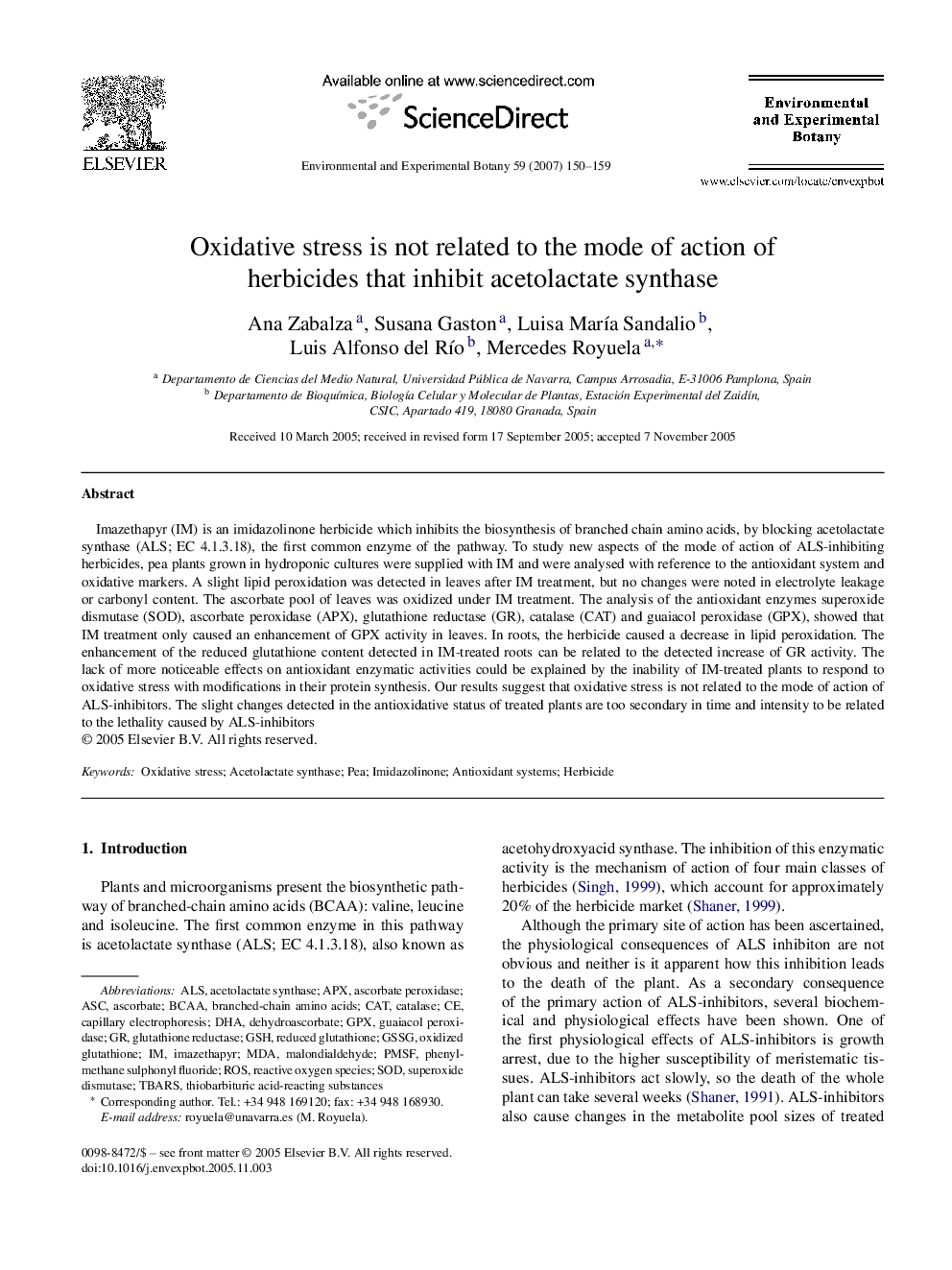| Article ID | Journal | Published Year | Pages | File Type |
|---|---|---|---|---|
| 4555716 | Environmental and Experimental Botany | 2007 | 10 Pages |
Imazethapyr (IM) is an imidazolinone herbicide which inhibits the biosynthesis of branched chain amino acids, by blocking acetolactate synthase (ALS; EC 4.1.3.18), the first common enzyme of the pathway. To study new aspects of the mode of action of ALS-inhibiting herbicides, pea plants grown in hydroponic cultures were supplied with IM and were analysed with reference to the antioxidant system and oxidative markers. A slight lipid peroxidation was detected in leaves after IM treatment, but no changes were noted in electrolyte leakage or carbonyl content. The ascorbate pool of leaves was oxidized under IM treatment. The analysis of the antioxidant enzymes superoxide dismutase (SOD), ascorbate peroxidase (APX), glutathione reductase (GR), catalase (CAT) and guaiacol peroxidase (GPX), showed that IM treatment only caused an enhancement of GPX activity in leaves. In roots, the herbicide caused a decrease in lipid peroxidation. The enhancement of the reduced glutathione content detected in IM-treated roots can be related to the detected increase of GR activity. The lack of more noticeable effects on antioxidant enzymatic activities could be explained by the inability of IM-treated plants to respond to oxidative stress with modifications in their protein synthesis. Our results suggest that oxidative stress is not related to the mode of action of ALS-inhibitors. The slight changes detected in the antioxidative status of treated plants are too secondary in time and intensity to be related to the lethality caused by ALS-inhibitors
